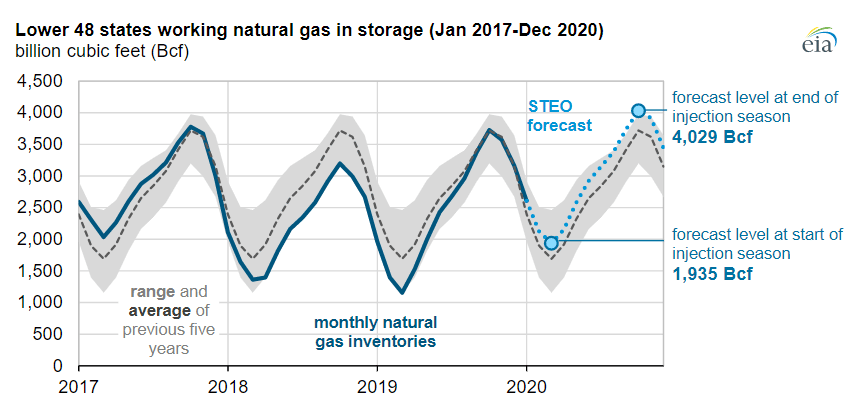U.S. Natural Gas Inventories Set to Reach Record Levels This Year: EIA

The total working natural gas in storage is projected to exceed the previous five-year average for the remainder of 2020, despite declines in production, increases in power sector consumption, and growth in exports, according to a Feb. 24 report from the U.S. Energy Information Administration.
The Lower 48 states’ working natural gas in storage will end the 2019–20 winter heating season at 1,935 billion cubic feet, with 12 percent more inventory than the previous five-year average. The agency attributes the increase to mild winter temperatures and continuing strong production.
The total natural gas storage at the start of this heating season on Oct. 31, 2019 was 3,725 Bcf, and withdrawals are expected to total 1,790 Bcf at the end of March 2020, the least natural gas withdrawn during a heating season since the 2015–16 winter when temperatures were also mild.
Net injections during the refill season from April 1–Oct. 31 are projected to bring the total working gas in storage to 4,029 Bcf, which would be the largest monthly inventory level on record.
Injections and withdrawals balance seasonal and other fluctuations in consumption. High demand during winter is driven by increased natural gas use for space heating increase. In summer months, power sector demand soars when overall electricity consumption is relatively high because of air conditioning.
Monthly natural gas production is expected to decline from last year’s record levels in 2020 as lower prices reduce incentives for gas-directed drilling and as lower crude oil prices reduce incentives for oil-directed drilling and associated gas production, according to the agency.
EnerKnol Pulses like this one are powered by the EnerKnol Platform—the first comprehensive database for real-time energy policy tracking. Sign up for a free trial below for access to key regulatory data and deep industry insights across the energy spectrum.
ACCESS FREE TRIAL


